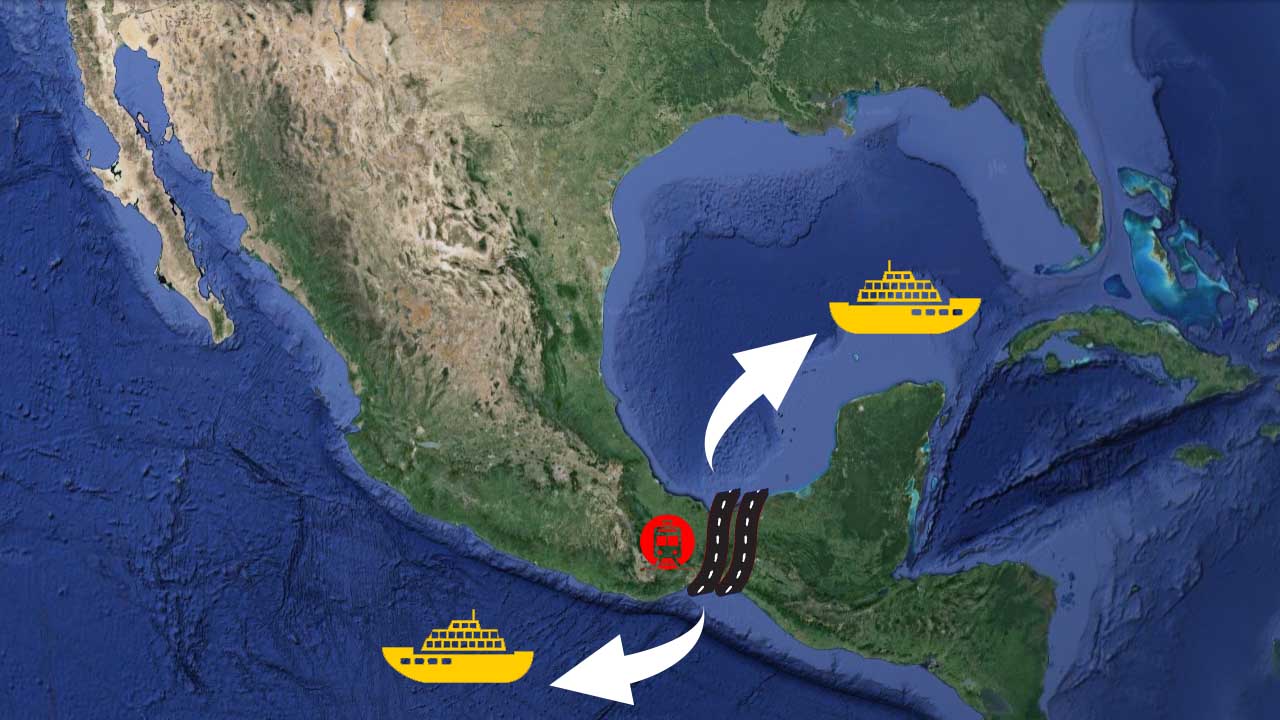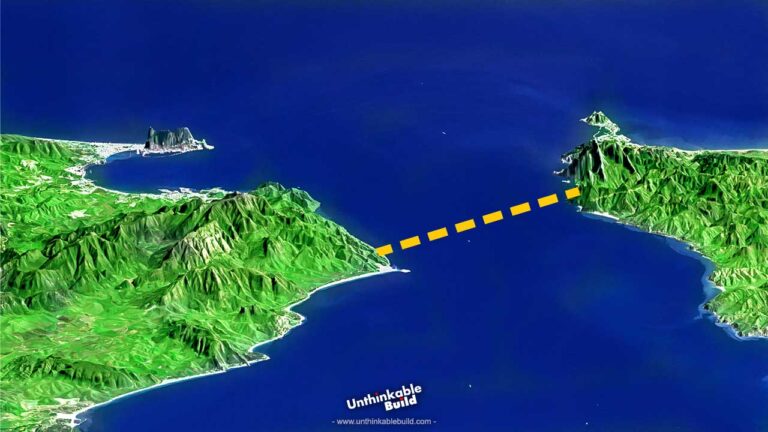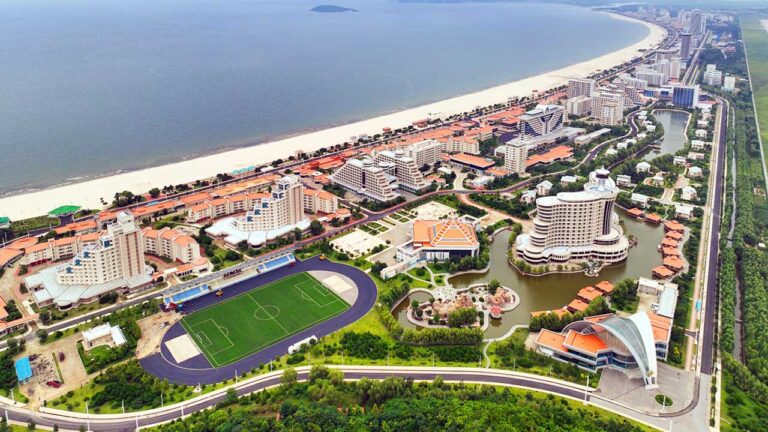Isthmus of Tehuantepec: Mexico’s New Corridor to Replace the Panama Canal
Trade by sea holds a crucial position within the global economy, with its significance spanning several key dimensions. The volume of trade conducted via international shipping constitutes a staggering 90% of world trade, underlining its indispensability for the movement of goods across continents. Without maritime transport, the logistics of intercontinental trade, the transportation of bulk raw materials, and the trade of essential commodities would be impractical.
In maritime transport, the significance of the Panama Canal cannot be overstated. It stands as a pivotal artery of global trade, connecting the Atlantic and Pacific Oceans and reshaping maritime commerce in profound ways.
However, in a significant development, Mexico has embarked on a groundbreaking project touted as a potential rival to the iconic Panama Canal. This ambitious endeavor entails the construction of an extensive megaproject spanning nearly 1,000 kilometers, designed to facilitate the transportation of goods between the Atlantic and Pacific Oceans. As construction progresses rapidly, speculation abounds regarding the project’s capacity to challenge the historical dominance of the Panama Canal. Join us in today’s video as we delve deep into this endeavor and explore its implications for global maritime trade.
The Isthmus of Tehuantepec spans across the Mexican states of Oaxaca, Veracruz, Chiapas, and Tabasco, serving as the narrowest point between the Pacific Ocean and the Gulf of Mexico, covering a mere 221 kilometers. Throughout history, it has garnered attention as a potential inter-oceanic passage.
Also Read: Digging Deep: Inside Google’s Geothermal Power Initiative
In the early 16th century, Spanish conquistadors embarked on a quest to locate a strait connecting the Pacific and Atlantic Oceans, making this region a pivotal route in their explorations. Approximately two-thirds of the journey involved navigating through the formidable Coatzacoalcos River, with the remaining portion traversed by land.
Since the era of governor Hernán Cortés, the Isthmus of Tehuantepec has been regarded as a favorable route, initially for an inter-oceanic canal and later, during the 19th century, for an inter-oceanic railway line. However, the Panama Isthmus, being significantly narrower, ultimately led to the construction of an interoceanic passage through that Central American republic.
The Panama canal’s strategic location at the narrow Isthmus of Panama provides a vital shortcut for ships traveling between the Atlantic and Pacific Oceans. This geographic advantage has made the 65 kilometer long canal a linchpin of international trade and a critical conduit for the movement of goods between East and West.
The Panama Canal significantly reduces travel distances and transit times for vessels, offering a more efficient route compared to the lengthy and often perilous journey around the southern tip of South America. This efficiency translates into cost savings for shipping companies and facilitates the timely delivery of goods, thereby enhancing global trade flows.
Before the construction of the Panama Canal, maritime trade faced significant challenges due to the geographical barriers posed by the Americas. Ships traveling between the Atlantic and Pacific Oceans had to navigate either around the southern tip of South America, known as Cape Horn, or around the southern tip of Africa, the Cape of Good Hope.
These routes were not only lengthy but also hazardous, subjecting vessels to unpredictable weather conditions, treacherous seas, and the risk of piracy. The journey around Cape Horn, in particular, was notorious for its fierce winds, towering waves, and icy waters, posing considerable dangers to ships and their crews.
Economically, the canal has catalyzed development in Panama and the surrounding region by fostering trade, investment, and infrastructure development. It serves as a key driver of Panama’s economy, generating revenue from tolls and supporting ancillary industries such as shipping, logistics, and tourism.
Construction of the Panama Canal began in 1904 under the supervision of the United States, after the French attempts in the late 19th century failed due to engineering problems and high mortality rates from disease. The project was completed in 1914, taking around 10 years to finish. The construction involved excavating nearly 240 million cubic yards of earth, creating a system of locks, and building a large artificial lake.
The total cost of building the Panama Canal was approximately $375 million. This cost included expenses for labor, equipment, materials, and healthcare for workers, among other things. Thousands of workers, including engineers and laborers, were involved in the construction, with many facing harsh conditions and disease outbreaks such as malaria and yellow fever.
Despite numerous challenges, the Panama Canal officially opened in August 1914 after a decade of dedicated effort. Today, it facilitates the passage of over 10,000 ships annually, transporting more than half a billion tons of goods, fundamentally altering the landscape of global trade.
In the 19th century, ambitions to connect the Atlantic and Pacific oceans were not exclusive to the United States. Porfirio Díaz envisioned the establishment of a railway linking the two oceans upon assuming the presidency. In mid-January 1907, the Tren Interoceánico railway commenced operations, seven years before the Panama Canal. Initially embraced by the global trade community, it facilitated the transport of hundreds of thousands of tons of cargo, bolstering Mexico’s economic prosperity.
However, with the opening of the Panama Canal in 1914, shipping companies predominantly transitioned away from the Mexican Railway. Cargo volume plummeted by a third, and within a year it dwindled by nearly 80%. Unable to sustain profitability due to declining traffic, the Tren Interoceánico railway gradually deteriorated.
In 2018, President Lopez Obrador launched efforts to rejuvenate Mexico’s old railway system and create a modern corridor linking the Atlantic and Pacific, positioning it as a viable alternative to the nearby Panama Canal. The ambitious initiative of Interoceanic Corridor of the Isthmus of Tehuantepec, or CIIT was formally announced a few months later, detailing proposals for three key rail routes.
Also Read: Tsing Ma Bridge: The $1.35 Billion Bridge that Connects Two Major Islands
The Interoceanic Corridor of the Isthmus of Tehuantepec stands as a crucial trade and transit route in Southern Mexico, overseen by the Mexican Secretariat of the Navy. This corridor serves as a vital link between the Pacific and Atlantic Oceans, facilitated by the Ferrocarril del Istmo de Tehuantepec railway system. Let’s explore its components and objectives in detail:
The CIIT serves as a conduit for both cargo and passenger transportation across the Isthmus of Tehuantepec. It entails the modernization and expansion of local seaports, particularly the ports of Salina Cruz in Oaxaca and Coatzacoalcos in Veracruz. Additionally, it encompasses key industrial facilities such as the Minatitlán oil refinery and the Salina Cruz oil refinery. To attract private investors, the project aims to establish ten industrial parks in the Isthmus area and two more in Chiapas. Ultimately, its overarching goal is to stimulate the economy and industry of Southern Mexico, fostering both national and international economic investment while facilitating international trade.
Initiated during the presidency of Andrés Manuel López Obrador, the CIIT is regarded as one of his flagship projects. Analysts perceive it as a potential long-term catalyst for the Mexican economy, with the potential to uplift the industry and economy of the historically disadvantaged South. Some even draw comparisons, dubbing it as an alternative that is cheaper and faster than the Panama Canal.
Mexican President Lopez Obrador embarked on a personal voyage aboard a passenger train, traversing the entire route in under nine hours—a feat surpassing the time required to navigate the Panama Canal. Just two months later, a few days before Christmas in 2023, the inaugural train commenced its public operations, ferrying local passengers from the Atlantic coast to the Pacific. The completion of the remaining two lines is expected by the conclusion of 2024.
Recent reports from the InterTraffic Mexico 2022 meeting indicate significant progress in the project, with operations slated to commence in 2023. The railway component of the corridor was completed by December 2023, marking a significant milestone. It is anticipated that the CIIT will facilitate the movement of 1.4 million containers annually, further enhancing connectivity and trade in the region.
While some experts speculate about the Interoceanic Corridor of the Isthmus of Tehuantepec potentially outpacing the Panama Canal in terms of cost-effectiveness and speed, leading to potential shifts in shipping routes, it’s important to note that the primary aim of the Mexican railway corridor isn’t to render the canal obsolete. Advocates of the project consistently emphasize that the CIIT is meant to complement, not replace, the Panama Canal entirely.
Despite the Panama Canal’s impressive capacity of handling up to 4 million cargo containers annually, it often faces strain due to rising demand. In this context, the CIIT is envisioned as a supportive element to improve the overall efficiency and capacity of international trade routes.







